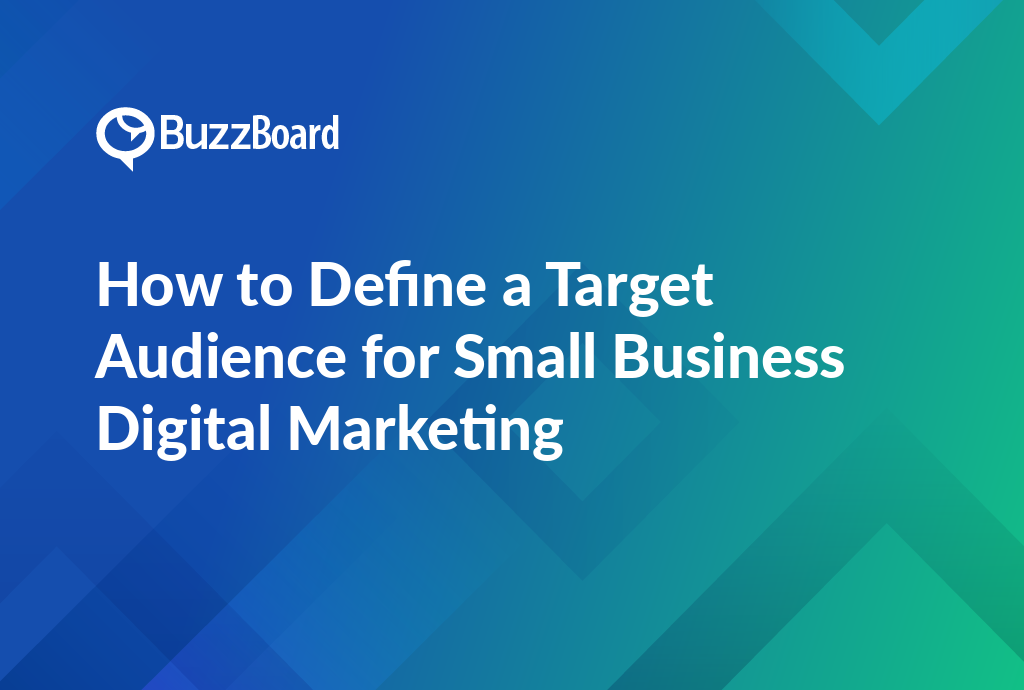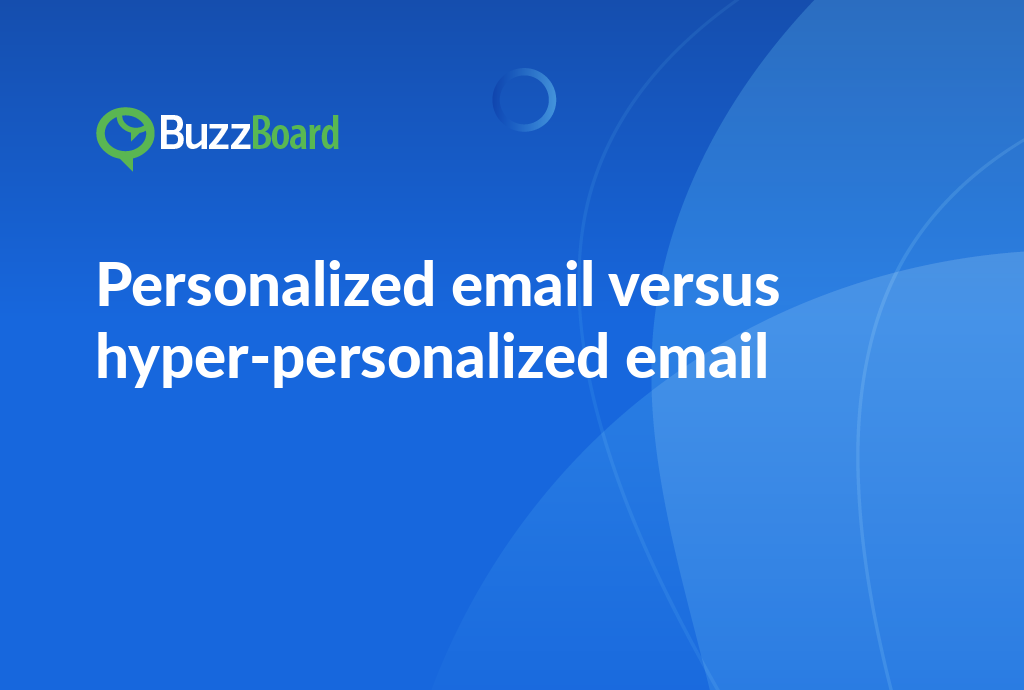Guidelines on Defining a Target Audience for Small Business Digital Marketing
In the evolving digital landscape, accurately defining a target audience for small business digital marketing is not just a critical component—it’s a cornerstone of robust marketing programs. Ideal customer profiles, once deemed important for only large corporations, now play an essential role in small business’s digital marketing strategies. By understanding the nuances of your target audience, digital agencies can tailor their services for maximum impact, ensuring a high return on investment for their small business clientele.
The process of understanding your target audience begins with constructing an ideal customer profile. Ask yourself: Who are the consumers that need your client’s products or services? What are their interests, and what challenges do they face? This information not only guides a direct, detailed marketing message, but it also forms the foundation for personalized communication that makes the customer feel understood and valued.
For instance, in a tech-dependent world, Millennials and Generation Z might be the coveted target audience for many businesses. Known as tech-savvy, these cohorts are frequent users of online services and may be more receptive to digital marketing strategies compared to older audiences. However, demographics isn’t the only segmentation resource. By accounting for all aspects of the ideal customer profile—demographics, geographics, psychographics, and purchasing patterns—digital agencies can craft carefully-calibrated digital marketing strategies.
Creating customer avatars marks an excellent starting point when trying to identify your target audience. This process combines the demographic, psychological, and behavioral traits of your ideal customer into a single “avatar”. This comprehensive customer profile aids in optimally tailoring marketing strategies, resonating profoundly with your small business clients.
Through the alignment of a company’s product or service with the defined target audience, digital marketing agencies can fully utilize their expertise, effectively serving their clients. By issuing creative, engaging, and targeted content and campaigns, these agencies can guide small businesses toward making their mark in the vast digital marketplace.
Ultimately, aiding your agency’s small business clients in defining their target audience for their digital marketing measures can broaden your agency’s prospects for success and growth.
The Significant Role of Identifying an Ideal Customer Profile in Enhancing the Efficacy of Digital Marketing Strategies
A robust digital marketing plan begins with a well-defined image of your ideal customer, commonly known as the ideal customer profile. This crucial tool is the foundation upon which all subsequent marketing strategies are built, and it plays a vital role in defining a target audience for small business digital marketing. By creating a comprehensive ideal customer profile, digital agencies can develop more effective marketing strategies that resonate with their target audience, ultimately driving business growth and revenue.
Crafting an ideal customer profile requires a deep understanding of who your small business clients wish to serve. It involves identifying the demographic characteristics of their prospective customers, including age, gender, location, income, education level, and other relevant factors. However, it doesn’t stop there. A well-crafted ideal customer profile also delves into the subtleties of their behavior, interests, challenges, and buying habits. This nuanced understanding of their target audience enables digital agencies to develop marketing messages that resonate with their audience, increasing the likelihood of engagement and conversion.
The benefits of formulating an ideal customer profile are numerous and far-reaching. Primarily, it allows digital agencies to comprehend what motivates their small business clients’ customers, directing the creation of appealing marketing messages that yield higher engagement levels. Moreover, a well-crafted ideal customer profile enables agencies to hone in on the target audience and optimize their marketing initiatives to effectively reach these consumers. This targeted approach ensures that marketing efforts are not squandered on individuals who exhibit no interest or need for the offered product or service.
Furthermore, a well-defined ideal customer profile enables digital agencies to identify the most profitable segments of their target audience and tailor their marketing strategies accordingly. This targeted approach can significantly boost return on investment (ROI) for small business clients, as marketing efforts are focused on consumers most likely to convert into paying customers.
In addition, an ideal customer profile provides a framework for measuring the effectiveness of marketing campaigns. By tracking key performance indicators (KPIs) such as engagement rates, conversion rates, and customer acquisition costs, digital agencies can refine their marketing strategies and optimize their efforts for maximum ROI.
Identifying an ideal customer profile is a boon to digital agencies, helping them deliver more streamlined, effective, and profitable marketing services to their small business clients. By taking the time to understand their target audience, digital agencies can develop marketing strategies that resonate with their audience, drive business growth, and increase ROI.
How to Use Digital Agency Resources to Define a Target Audience for Small Business Clients
In today’s digital world, it’s crucial for small businesses to identify and engage their target audience. For digital marketing agencies, understanding their small business clients’ ideal customer profile can be the key to a successful marketing program.
Defining a target audience involves more than just identifying age and location. It requires an in-depth analysis of behavior patterns, motivations, and challenges. Digital agencies have a multitude of tools and resources available to conduct this process effectively.
Understanding the perfect customer profile builds the foundation for efficient and profitable marketing programs. It’s about discerning who will be most receptive to the product or service your small business clients provide. By utilizing data from various digital marketing channels, you can begin to formulate a solid image of your clients’ target audience.
Google Analytics is a powerful tool that assists with this process. It offers insights into user demographics visiting your client’s site, their behaviors, the type of content they engage with, and even their most active times.
Online communities and forums related to your industry can provide valuable insights into the preferences, interests, and challenges of potential customers. Even monitoring discussions on social media platforms can reveal significant information about your target audience and their behavior.
A digital agency’s resources aren’t only limited to data collection. Data visualization tools can convert the gathered data into actionable insights. You can identify trends and patterns that would be difficult to spot in raw data, which makes sharing these discoveries with your small business clients easier.
Comprehending your target audience allows you to develop digital marketing strategies tailored to their particular needs, preferences, and behaviors. This focused approach leads to better ROIs for your clients and, in turn, more business for your agency.
By leveraging resources to define a target audience for small businesses, digital agencies not only provide valuable insights but also position themselves as strategic partners for their clients’ growth and success.
Remember, understanding your clients’ ideal customer profile isn’t a one-time task. As markets fluctuate, technology advances, and customers’ behaviors evolve, regular reassessments will keep your marketing programs relevant and effective.
Efficient Marketing Programs That Aid in Defining a Target Audience for Small Business Digital Marketing
Understanding your customer’s persona and subsequently creating an ideal customer profile is an essential and effective step in defining a target audience for small business digital marketing. A thorough understanding of your potential customer’s behaviors, interests, and needs helps shape the marketing strategy and drives revenue.
As a digital agency, it’s your job to educate your small business clients about the importance of defining their target audience. Remember, a marketing strategy without a clearly defined ideal customer profile is like shooting in the dark.
Firstly, let’s address the basics—what is an ideal customer profile? It’s a detailed depiction of a company or individual who will receive the most value from your client’s product or services, and in return, provide high value to the company.
So how do your small business clients define their target audience? The key is data. Utilizing market research, client feedback, and even social media metrics, businesses can identify their core customer base. Subsequently, they can use this knowledge to tailor marketing strategies that attract these customers.
Marketing programs, including SEO, social media marketing, email marketing, or content marketing, can prove invaluable during the process. Each comes with their specific benefits for advertising and can tremendously help in identifying, defining, and targeting the ideal customer base.
Furthermore, when targeting through digital marketing, the possibilities are endless! Your clients can use demographic, geographic, or interest-based approaches to fine-tune their audience and maximize their marketing campaigns.
Ultimately, having an exact ideal customer profile increases marketing effectiveness and optimizes the budget. More importantly, it spares your clients from wasting time trying to sell to customers who aren’t a good fit.
A well-understood target audience impacts everything – from creating an engaging brand story to shaping the product, pricing, and promotional strategies.
Digital marketing agencies assisting small businesses in defining their target audience to develop marketing programs have an advantage. So, it’s time you powered your client’s small business growth!
Success Stories of Digital Agencies That Have Triumphed in Defining a Target Audience for Their Small Business Clients
As a digital agency serving small business clients, understanding the cornerstone of any successful digital marketing effort begins with adequately defining a target audience. This audience definition involves creating an ideal customer profile, a representation of your client’s perfect customer based on market research and real data.
Properly defining the target audience became a game-changer for an agency. A textile manufacturer with a respected 50-year offline reputation struggled to deliver their message to the correct online audience. Armed with a clearly defined ideal customer profile, the digital agency tailored marketing programs that catered directly to the client’s target audience, resulting in increased online engagement and sales.
The highly competitive nature of the digital marketing world also prompts agencies to deliver the right message to the right audience in the right way. Another agency saved their small business client, a local restaurant, from closing amidst intense competition. They achieved this by redefining the target audience, causing a shift in their content and social media strategies, and significantly boosting their online presence and offline sales.
Creating an ideal customer profile goes beyond generic demographic details such as age, location, and income. It involves customer psychographics and behaviors, considering their interests, lifestyles, values, and pinpointing who, where, why, and how to reach your audience.
The success stories of these digital agencies underscore the importance of defining a target audience for small business digital marketing. This not only helps small businesses cater their services and products to a specific audience, but it also aids digital marketing agencies in developing a marketing strategy specifically tailored to the client’s needs and goals.









